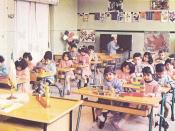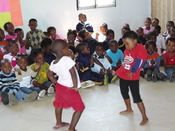Introduction
The topic of sex differences in the play preschoolers has been explored by many researchers in the past. Studies have been conducted on basic sex differences such as what toys and gender of playmates do young boys and girls prefer. The size of children's play networks, as well as if these networks change in the size during the preschool years have been explored. Also, differences in styles of play and the occurrence of positive and negative interactions have been examined. The effect that parents have on their sons and daughters, as well as preschool classrooms and teachers have been examined as possible causes of sex differences during play.
The aim of this paper is to critically review the recent literature in this field and determine whether or not sex differences occur in play. If sex differences occur, the possible reasons for this occurrence will also be examined.
Review of the Research Section
Maccoby (1990) summarized a number of studies to support her hypothesis that suggests different social situations may either heighten or suppress sex differences in behaviour.
One study was that of social interaction between pairs of young children (Jacklin & Maccoby, 1978). Pairs of 33-month old children were brought together in the same-sex or mixed-sex in a laboratory playroom, and the amount and kind of social behaviour directed more social behaviour, both positive and negative, to same sex playmates that opposite sex ones. Girls paired with boys were more likely to stand watching their partners, or withdraw towards an adult, than boys in any pairing or girls playing with girls. The point brought up in this study is that interactive behaviour is not just situationly specific, it also depends on the gender of participants.
Some of the reasons given by Maccoby (1990) for attraction to same sex partners...


